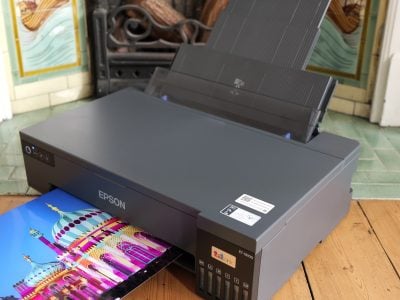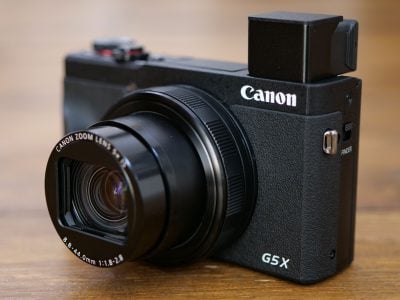Sony Cyber-shot DSC-T77
-
-
Written by Gordon Laing
Sony T77 vs Canon IXUS 870IS / SD 880IS vs Panasonic FX35 High ISO Noise
 |
The lenses on each camera were adjusted to deliver the same field of view. Where coarse increments prevented an exact match using the zoom alone, the camera’s position was moved slightly back or forth to compensate. |
The image above was taken with the Sony Cyber-shot T77 at a sensitivity of 80 ISO, with the lens zoomed-out to 7mm f3.5; the exposure was 1/4 of a second and the original 10M JPEG file measured 3.23MB. The crops are taken from an area just to the right of the centre and presented at 100%.
While all three cameras share the same resolution, they once again exhibit quite different approaches to image processing and noise reduction. Panasonic is adopting a more hands-off approach here, revealing the greatest noise, while Sony is going for higher noise reduction at the cost of smearing; Canon’s IXUS 870IS / SD 880IS is positioned somewhere in-between.
So with all three cameras, the best results are at the very lowest sensitivities, which in the case of the Sony (and Canon) is at 80 and 100 ISO. At 200 ISO, noise is affecting all three cameras, but Sony’s smearing it away, sadly taking some fine detail with it. At 400 ISO, there’s a bigger drop in quality, although again Sony’s masking most of the visible noise speckles with heavier noise reduction, again sacrificing detail as a result.
At 800 ISO though, no amount of noise reduction can hide the fact the T77 is greatly suffering alongside the other two models here. All three significantly deteriorate at 1600 ISO, with this and anything higher being essentially unusable.
So like its 10 Megapixel rivals here, the Cyber-shot T77 is best used at 200 ISO or below, or 400 ISO at a push. At higher sensitivities, the quality greatly decreases with significant noise reduction artefacts, and is only suitable for smaller prints or emails / websites at reduced size. There’s no clear winner of the three cameras here in terms of high ISO performance, although pixel-peepers may prefer one noise reduction strategy over another.
Now head over to our Sony Cyber-shot T77 Gallery to see some more real-life shots in a variety of conditions.
Sony Cyber-shot DSC-T77 |
Canon IXUS 870IS / SD 880IS |
Panasonic Lumix DMC-FX35 | ||
 |
 |
 | ||
80 ISO |
80 ISO |
80 ISO not available | ||
 |
 |
 | ||
100 ISO |
100 ISO |
100 ISO | ||
 |
 |
 | ||
200 ISO |
200 ISO |
200 ISO | ||
 |
 |
 | ||
400 ISO |
400 ISO |
400 ISO | ||
 |
 |
 | ||
800 ISO |
800 ISO |
800 ISO | ||
 |
 |
 | ||
1600 ISO |
1600 ISO |
1600 ISO | ||
 |
 |
 | ||
3200 ISO |
3200 ISO (at 2 Megapixels) |
3200 ISO (at 3 Megapixels) |




